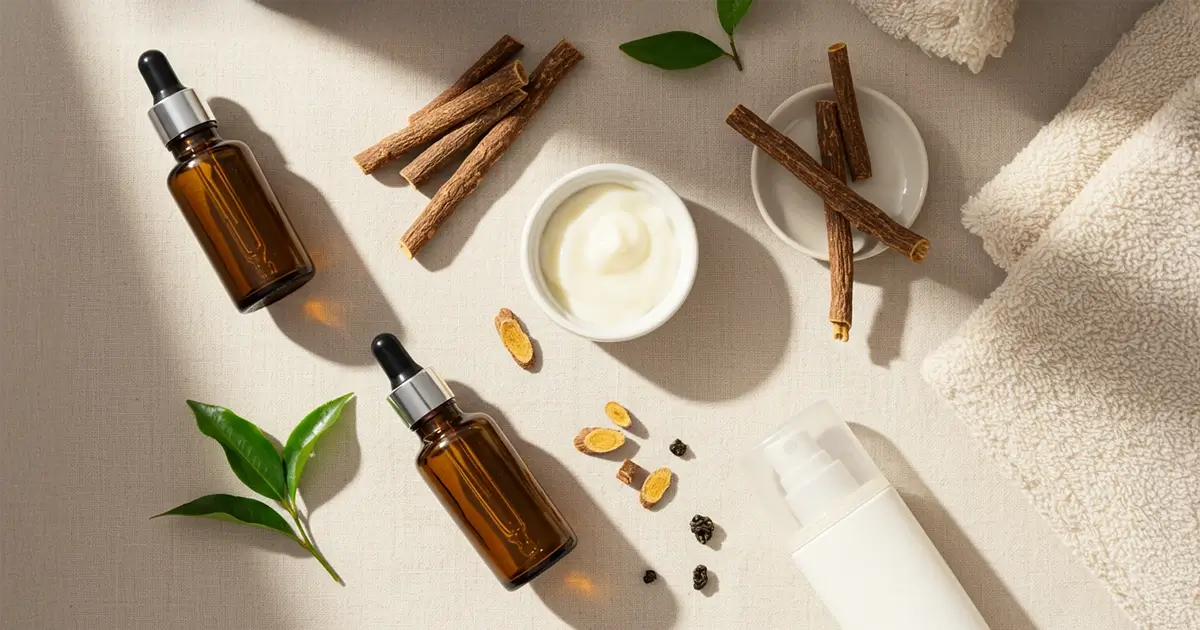Dark spots can feel like uninvited guests who refuse to leave, yet they respond surprisingly well to a patient, science-guided strategy. Today I unpack the root causes of hyperpigmentation, share the exact morning-to-night routine I use, and sprinkle in dermatologist-approved upgrades so you can lighten discoloration while keeping your skin barrier happy.
Why Dark Spots Linger: The Pigment Puzzle
Hyperpigmentation is a catch-all term for patches of excess melanin left behind after sunburns, breakouts, hormone swings, or aggressive scrubs. Melanocytes pump pigment into the surrounding epidermis as a protective shield, but once the trigger is gone the pigment can take months to lift. Understanding this slow fade is the first step to staying motivated.
Melanin travels upward through the skin's layers until it finally flakes away during natural desquamation. A full cell turnover cycle averages twenty-eight days in younger skin and stretches to forty-five days or longer after our thirties. Treating stubborn spots therefore means nudging pigment out at every stage: blocking new production, accelerating turnover, and shielding newly even skin from relapse.
Hydroquinone was once the go-to lightener, but modern routines lean on gentler multitaskers - think azelaic acid, niacinamide, kojic acid, retinoids, and the increasingly beloved tranexamic acid. A 2024 peer-reviewed overview showed topical tranexamic acid rivaling hydroquinone without the irritation baggage in this study.
Your Morning Game Plan: Defend and Brighten
I treat mornings as defense mode. The goal: stop fresh pigment from forming while punching up luminosity. Start with a gentle, low-pH cleanser; micellar water works if your skin is dry, while a creamy syndet keeps oilier faces calm. Over-washing is like inviting drama - it weakens the barrier and can spark more spots.
Next comes an antioxidant cocktail. I reach for 10 percent niacinamide to slow melanin transfer, paired with stable vitamin C for free-radical mop-up and collagen support. If you need a crash course on choosing bottles that stay potent, peek at my earlier deep dive: Stabilizing Vitamin C Serums for Brighter, Firmer Skin.
Layer a hydrating essence or serum with 0.5–1 percent tranexamic acid. Unlike exfoliants, TXA works by blocking the plasmin pathway tied to pigment production, so it plays nicely with sensitive complexions. Follow with a weightless moisturizer rich in ceramides to seal hydration.
- Sunscreen is non-negotiable. Choose broad-spectrum SPF 50 with reliable UVA filters such as Tinosorb S or Uvinul A Plus.
- Reapply every two hours outdoors and at midday by a sunny window.
- Top off with tinted mineral powder if shine appears; it adds iron oxides that guard against visible light which can deepen existing patches.
One small joke to remember your SPF: treat it like coffee - skip it and you might feel awake, but your skin won't appreciate the gamble.
Evening Routine: Correct, Exfoliate, Renew
Night-time is repair time. Double cleanse if you wore makeup or heavy sunscreen: an oil cleanser lifts film, then a mild foaming wash removes residue. Skin should feel comfortable, never squeaky.
Alternate chemical exfoliants three nights a week. Mandelic acid (8–10 percent) is my pick for deeper-tone friendliness; it clears pore gunk yet stays gentle due to its larger molecular size. Another option is 14 percent azelaic acid foam, which targets both post-acne marks and active blemishes in one sweep.
On non-acid nights, reach for a retinaldehyde serum. Retinoids accelerate turnover, encouraging melanin-filled cells to exit stage left. Pair with a peptide-rich moisturizer so the retinoid can focus on pigment patrol while the barrier gets its nightly TLC.
A couple of dabs of 0.1 percent licorice root gel around stubborn patches can add an extra tyrosinase-blocking push. Be patient; consistent nightly use over twelve weeks is a realistic horizon for noticeable fading.
Targeted Boosters and In-Office Options
Some spots prove as clingy as glitter after a craft project. When over-the-counter efforts plateau, prescription triple creams (hydroquinone, retinoid, mild steroid) used in eight-week bursts can jump-start progress under a dermatologist's eye.
Micro-needling, fractionated lasers, and 4 percent kojic acid chemical peels can also help, provided strict photoprotection follows. Lasers should be handled cautiously on rich melanin backgrounds because mishandling can swap dark patches for lighter halos.
I reserve oral supplements as supporting actors. Polypodium leucotomos extract and French maritime pine bark boast small studies hinting at photoprotective effects. They are not magic beans, yet they offer an extra umbrella for frequent beachgoers when paired with topical sunscreen.
Daily Habits That Speed Fading
Diet does not bleach spots outright, but antioxidant-rich produce lessens oxidative stress that activates melanocytes. Think berries, leafy greens, and tomatoes. Swap sugary sodas for green tea - its EGCG polyphenols have a mild tyrosinase-blocking talent.
Manage inflammation triggers. Picking pimples, over-exfoliating, or neglecting eczema flares invites fresh pigment. Keep nails away from bumps, treat breakouts promptly, and moisturize diligently during retinoid use.
Finally, track progress with monthly photographs in the same lighting. The eye adapts, and subtle improvements become clearer when you line up side-by-side shots. Remember: consistency beats intensity every time.
When to Call in the Pros
If a lesion darkens rapidly, has uneven borders, or feels raised, book a skin-check. Dermatologists can distinguish benign post-inflammatory marks from evolving moles, lentigines, or melasma that demands tailored therapy.
Expect a well-rounded plan that may include compounded pigment creams, in-office peels, and strict sun protocols. Regular follow-ups catch irritation before it derails progress.
FAQ
How long before I see visible fading?
Mild spots often lighten within eight to twelve weeks of strict routine use, while deeper melasma can require six months or longer.
Can I use multiple brighteners together?
Yes, provided they target different pathways - niacinamide, tranexamic acid, and vitamin C layer well without over-exfoliating.
Is sunscreen still needed on cloudy days?
Absolutely. Up to 80 percent of UVA penetrates cloud cover and continues to fuel pigment production year-round.
Will lemon juice bleach dark spots?
Please resist turning your face into a salad. Citrus acids can burn and trigger more pigmentation; stick with proven actives.
Do dark skin tones need different treatment?
The active ingredients remain the same, but lower strength acids and cautious laser settings help avoid hypopigmentation risks.
Conclusion
Fading dark spots comes down to three pillars: block new melanin, speed up turnover, and guard against light. Patience, gentle actives, and diligent sun care form a powerful trio when practiced daily.
Got questions or personal triumphs to share? Drop a comment below - I love reading them. See you in the next post - until then, take good care of your skin!


Comments (0)
No comments yet - be the first to share your thoughts!
Leave a Reply
Your email address will not be published. Required fields are marked *